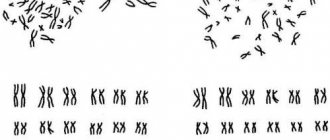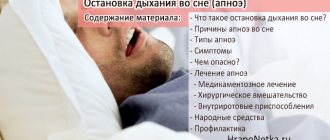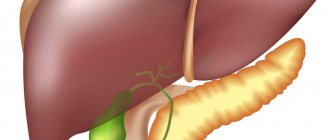Causes of pathology
The syndrome most often affects professional runners and is associated with damage to the tibia, which becomes deformed when the heel repeatedly strikes the ground during physical activity. The ankle joint is also a high-stress area. The risk of pathology increases with injuries to large joints, as well as with flat feet.
Overstrain of the muscles and tendons of the surface of the lower leg occurs, which contributes to the appearance of the syndrome. Chronic joint diseases increase the risk of developing pathology. A provoking factor is jogging without prior warm-up, as well as wearing uncomfortable shoes that unevenly distribute the load.
Causes of knee pain
The main causes of knee pain in the front include:
- dislocation of the kneecap;
- changes in the bone tissue of the kneecap;
- knee arthrosis;
- muscle problems that cause the knee to be positioned incorrectly;
- wearing shoes that harm the joint;
- a weak medial head, causing the kneecap to move incorrectly;
- an unstable patella, which can cause the knee to move incorrectly;
- tendinitis, which occurs due to physical activity.
Most often, the leg hurts in front under the knee due to injury. Severe impact on the bone can cause a meniscus tear. Due to severe pain, the knee may stop bending, and the leg may seem to be jammed.
The second most common cause of knee pain is arthrosis. This is a disease that affects cartilage tissue. Most often, this diagnosis is made to elderly patients. In young people, arthrosis can only occur due to injury to bone, cartilage or joint. Another cause of the disease is weakness of the cartilage tissue, which can cause the joint to move in an unnatural way. Most often, women suffer from arthrosis. With arthrosis, the leg hurts in the front when descending or when loading. The patient may also feel friction in the knee; with palpation, the edge of the bone can be felt.
Symptoms
Symptoms of the syndrome are always pronounced:
- Severe pain occurs, which resembles that which occurs with a fracture.
- Under heavy load, the tendon pulls on the periosteum so that it moves.
- The person feels severe discomfort.
- The inflammatory process can cause swelling in the affected area.
- The mobility of the joint is limited, lameness appears.
Diagnosis is often made using CT or MRI. At the same time, the patient claims that he has a fracture, but the pictures show only displacement of the periosteum. If a ligament rupture is added to the syndrome, the pain intensifies. Redness of the skin appears over the damaged area.
Additionally, there may be numbness in the toes, which is an alarming sign. At night, cramps may occur, which disappear after complex treatment. There is a feeling of tension in the ankle joint. Additionally, there may be aches in large joints. The pain often intensifies during movement, when trying to walk or run.
Muscle compression syndrome
It occurs due to strong pressure on the muscles of the lower leg, and hemorrhage occurs in the damaged muscles. The injury occurs as a result of the limb being under compression for a long time - after the leg is released from the weight. A hematoma or lump forms in the lower leg joint, and swelling appears around it. The surrounding skin turns red, becomes hot, and the person feels severe pain in the problem area.
Prolonged exposure of the leg under weight causes respiratory spasm in a person, leading to poor circulation. After release, the patient complains of nausea, weakness, pain in the injured limb - long-term muscle compression syndrome.
Treatment measures
Treatment consists of the use of thermal procedures, anti-inflammatory and painkillers.
It is important in therapy to ensure complete rest of the affected limb.
Knowing how to bandage a leg at home can help alleviate symptoms. It is best to do this only in the initial stages. An elastic bandage is suitable for the procedure.
Warm compresses with clay will help relieve pain. To do this, you need to purchase the product at any pharmacy. You can use white, black or blue clay, which must first be diluted with warm water to the consistency of sour cream. Then apply to the area of pain and leave for 10 minutes under plastic wrap. The procedure should be repeated daily.
Non-steroidal anti-inflammatory drugs produce a good therapeutic effect. It is best not to take them orally, but to use them topically in the form of ointments and gels. To relieve pain and eliminate inflammation, Diclofenac, Nise, Dilogel, etc. are most often prescribed. Ointments and gels should be applied over the affected area 2-3 times a day.
For pain relief, you can take analgesics orally: Tempalgin, Baralgin, etc. Such drugs can reduce the manifestations of unpleasant symptoms. After the pain subsides, you can begin doing exercises that will help restore motor activity.
It is necessary to slowly rotate the foot in the ankle joint clockwise, then bend and straighten the fingers of the problematic limb.
Massage can be done during the recovery stage, but this does not mean that the movements should be intense. You can knead the ankle area by rubbing, pinching, etc. In this case, you can use pain-relieving ointments: Bystrum gel, Voltaren, etc. Such topical products will enhance the effect of the massage. If pain intensifies during the procedure, then it is better to abandon this type of therapy for a while.
Additionally, physiotherapy procedures can be used:
- Laser therapy produces a good effect, which improves blood circulation in the affected area and eliminates the inflammatory process. The sensor is placed over the painful point, the procedure is carried out within a few minutes.
- Mud wraps and paraffin therapy warm up the problem area and help speed up recovery.
- Electrophoresis with hydrocortisone helps to get rid of severe pain if carried out daily.
Shin splint syndrome causes, symptoms and treatment
Calf muscle strain
- a common occurrence associated with their chronic overload or forced contraction. Treatment is symptomatic and includes rest, local warmth and a gradual return to activity.
Shin splints syndrome
The term " shin splints"
» refers to a syndrome of transient pain in the lower leg caused by running or long walking; it must be differentiated from stress fractures and ischemic disorders. This condition usually occurs in the early period of training in athletes when running on a hard surface. The causes of its occurrence may be periostitis of the tibia and stretching of the muscles of the posterior group of the leg at the site of their attachment. The most common location of pain is the anteromedial surface of the distal two thirds of the leg.
In the treatment of shin splints
“Many methods were used, but Andrish proved that they are almost the same type and that the pain will not disappear until the patient stops training. The mainstay of treatment is rest, local heat if it relieves pain, and analgesics.
Carpal Tunnel Syndromes
In the human body
there are a number of fascial sheaths covering various muscle groups. Most often, compression occurs in those cases where the muscle groups are “squeezed” and are subject to compression within their cases, for example on the lower leg and especially among the anterior muscle group. Other similar syndromes described in relation to the calf muscles include deep posterior sheath and fascial sheaths surrounding the peroneal muscle group and soleus muscle.
Chronic carpal tunnel syndrome has recently been described
. In a series of observations of 100 patients with chronic tunnel syndrome involving 233 cases, the majority were runners. They noted aching or sharp pains that occurred during exercise and a recurrent feeling of tension. The average duration of clinical manifestations before surgery was 22 months. Bilateral lesions were present in 82 patients. In most patients, the syndrome developed in the anterior or posterior fascial sheath of the leg. All patients underwent fasciotomy with good outcome.
Treating Anterior Knee Pain
It is worth noting that treatment will depend on the cause of your knee pain. If treatment can be carried out using non-surgical methods, then in the acute phase of the disease it is necessary to take painkillers. Depending on the form of the disease and the patient’s condition, either complete or partial immobilization of the joint with the help of special fixators may be necessary. They are especially often used if the cause of arthrosis is damage to the meniscus or ligaments.
For certain injuries or illnesses, immobilization is contraindicated. In this case, you can use insoles or bandages specifically designed for walking or support.
Along with physical treatment, conservative types of therapy are often used. Treatment with ultrasound and current, both direct and alternating, can have a good effect. This treatment improves blood circulation, relaxes muscles and inhibits inflammatory processes.
Invasive treatment methods include knee arthroscopy or surgery.
Arthroscopy is performed not only for diagnostic purposes, but also to smooth out cartilage and remove foreign structures.
Open operations are performed exclusively when the patient needs to replace ligaments, when correcting deformities or implanting a joint.
After the doctor carries out a visual diagnosis and carries out a novocaine blockade, it is possible to reduce the meniscus using a closed method. True, most often its rupture can be treated exclusively surgically after diagnostics are carried out, for example, computed tomography.
Manifestations and treatment of shin splints syndrome
Anterior tibial syndrome, more commonly known as shin splints, involves injury to the lower extremity in the area distal to the knee joint on the anterior outer surface of the tibia (anterior form) or on the posterior surface (posterior form). These types of injuries are common among runners, but as the most common type of injury in the sports world, any athlete can suffer from it.
Symptomatic picture
Athletes usually experience pain from the inside of the lower leg at the end of running or physical exercise. In the absence of treatment, the severity of the pain syndrome will intensify, and then the unpleasant feeling will develop during training sessions. It is imperative to distinguish shin splints from other types of injuries, for example, compartment syndrome, which develops due to swelling of the muscle fibers inside the closed area. The described condition contributes to the development of a combat sign on the outer lower part of the limb and basically forces one to resort to a special diagnostic technique, for example, surgical “reduction of pressure” on the tissue.
The concept of shin splints
For quite a long time, scientists in the field of sports did not come to a consensus regarding this concept - from the development of the inflammatory process in myotissues to small lesions in them that were detached from the bone. An article in Runners Connect presented information obtained through anatomical research. The most likely explanation for this pathological condition is traumatic stress in the tibia. This is also supported by the formed low bone density - a CT study of the tibia of runners with pain syndrome confirms the low density of the bone structure in the area of pain. After the recovery period in runners, these phenomena in the bones disappeared.
In addition, athletes with stress overexertion often had large areas of low density around the microcrack. Thanks to this information, scientists put forward a theory according to which the cause of the formation of the pathology was recognized as recurrent pressure on the bone during running, which occurs when the bone bends slightly during the load. It undergoes serious loads, so when running (especially on the 1st plane), the bone bends slightly in the posterior direction at the moment the foot contacts the ground.
FLAT FOOT
The cause of the painful condition of the legs from the feet to the legs can be “normal” flat feet. This pain is characterized by an increase in the evening and aggravation during long walking and other physical activities; it is aching, tiring, and spreads throughout the lower part of the limbs. The feet may become visually larger, and the bone often begins to protrude.
Flat feet are “treated” by choosing shoes after consultation with a doctor, physical therapy complexes, and osteopathy also helps to cope with it. Osteopaths work on the foot, improving blood circulation, eliminating congestion, and stimulating the production of synovial fluid, which works as a lubricant for the joints. After just a few techniques, even an adult who has suffered from flat feet all his life becomes easier and more comfortable to shift.
Additional causative factors
Possible reasons for the development of the pathological condition are:
These factors act as a mechanical disorder that causes unequal distribution of load on the limbs. For them, it is necessary to perform a special restoration. And returning to intense physical activity without the necessary recovery in these cases increases the risk of recurrence of such an injury.
The body of athletes involved in sports has professionally adapted to severe physical activity, so it already reflexively knows the methods of restoring the tibia during significant loads. Athletes at the beginning of their athletic journey are somewhat susceptible to developing shin splints because their bone has not yet adapted to the overload that occurs during running.
Therapeutic measures
- The first step in the event of an injury is to apply ice and rest the leg.
- You should increase your walking frequency while running by 10%. An increase in this indicator reduces the pressure on the tibia each time the foot touches the surface of the ground (an increase in the stepping frequency leads to a temporary lengthening of the limb’s time in the air, and in parallel with this, the period of contact with the surface decreases)
- Properly selected shoes. Most experts also recommend using properly fitted shoes. New shoes also help eliminate the described problem, since the old one loses its ability to evenly absorb the load and does not provide enough support for the insufficiently curved foot.
- Strengthening muscle groups. Strengthening activities of the lower extremities and reducing tension in the muscles are extremely necessary. Strengthening the calf muscle and Achilles tendon fibers, which serve as additional “help” for the tibia, make it easier to overcome the load while running.
Here is an example of a set of exercises that will help develop and strengthen the power of muscle groups in the lower leg:
- Raising the heel part from the floor surface. Place your feet on a slightly inclined plane (steps) and move the limb back, bending at the knee joints. Increase the incline to increase physical activity.
- Myofascial relaxation on a special massage roller. Take the last one and sit on the floor surface. Place your foot at the ankle on the object, and rest the heel of the other foot on the ground. Massage the entire length of the shin for one minute, while alternately moving the leg back and forth. If a painful point is detected, you need to massage it for about 10-20 seconds.
- Lowering the heels. Stand with your toe on the step. Use a railing or wall as support. Keep your limbs straight and lower your heels down. Slowly lower your heels, resting solely on your toes. Repeat the exercise 10-20 times.
- Putting the lower limb on the toe. Stand on your toes, straighten your legs and jump 5-7 cm from the ground. Perform this exercise for 60-100 repetitions.
Tibial syndrome: causes and treatment options
Anterior tibial syndrome, more commonly known as shin splints, is an attack of the leg in the area below the knee on the front outer part of the lower leg (anterior shin splints) or in the back of the leg (posterior shin splints). These injuries are common among runners, but as one of the most common injuries in the world of sports, they can affect any athlete.
Symptoms of shin splints
Athletes typically experience sharp pain inside their lower leg after finishing running or exercising. If the injury is left untreated, the intensity of the pain will increase, so that discomfort may occur already in the middle of the workout. It is important to differentiate shin splints from other types of injuries, such as compartment syndrome, which occurs when the muscles inside the closed area become swollen. This condition causes pain on the outside of the lower leg and usually requires a special technique to diagnose, such as surgically "releasing pressure" on the tissue. Pain in the lower leg may also indicate a stress fracture (a small break in the bone), which requires an MRI to diagnose, especially in severe cases of shin splints that occur in small areas. Pain caused by shin splints is usually more general in nature than pain caused by a stress fracture, and is more severe in the morning after waking up as the soft tissue is compressed during sleep. The bones, on the other hand, are given a chance to rest during sleep, so that stress fractures cause less discomfort in the morning hours.
Leg muscle tension
Heaviness in the front of a person's legs is caused by tension in the leg muscles. The legs hurt, swell, there is a feeling of heaviness, and the soles of the feet hurt. When walking for a long time, pain occurs on the back of the lower leg. Constant stress on the legs leads to pain in the feet, hips, and buttock pain. The pain increases with running and jumping, and then tension in the joint and foot muscles occurs when walking.
Do not suddenly start playing sports, jumping, lifting weights. If you decide to run in the morning, try to do it gradually, starting with short loads. During pregnancy, women experience heaviness in the front and back surfaces of the lower leg, and the load on the muscles of the legs and feet increases.












